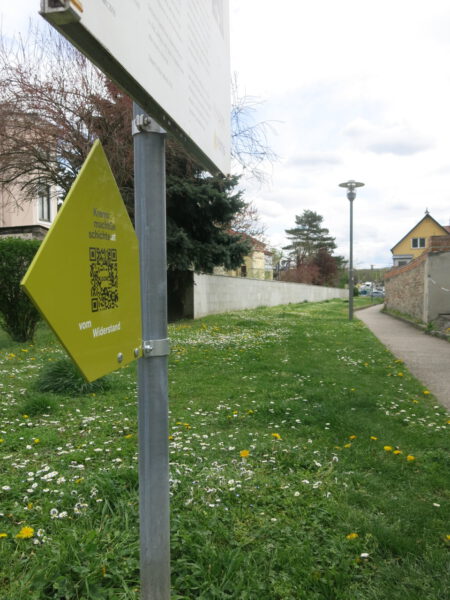KremsMachtGeschichte invites you to learn about and engage with the history of National Socialism in Krems. As you move through the city you connect various historical sites with each other. A simple stroll creates a personal narrative that brings the places, themes and histories into the present and enables you to keep the past alive in your critical memory.
What does it mean to “make history”? In 1938 Krems became the capital of the Gau, or Nazi administrative district, of “Lower Danube”. This was a time when Krems was making history, but history of a kind many would like to forget today. Today, when we remember, when we name perpetrators and tell the stories of victims, when we make resistance visible and point out continuities, we’re participating in the writing of history in our society. History isn’t just written in schoolbooks and by historians and at universities; it’s continually being produced by our everyday actions. History happens in the here and now.
24 historical sites, marked by green pennants, form the stations of the KremsMachtGeschichte tours. Every site stands for a different event that has something to tell us about destruction, persecution and crime, as well as about responsibility, solidarity and resistance. Some roads lead to memorials that glorify the past and that today need some historical correction. Prominent positions in the cityscape are taken up by the court and the prison, places where Nazi violence was once inflicted but that today contribute to the functioning of democracy. Many sites of past events are unrecognisable as such today; only through your imagination can they come back to life.
The information about each place can be called up with any smartphone by using the QR codes on the pennants. Texts and images can also be found in the catalogue which is displayed at various places in the city. By taking a walk through the city, you’re already making some history. En route from site to site, the historical picture gradually becomes more intricate. Common themes emerge, each of which groups the sites in a new way and connects them with our contemporary world. The themes include “on Jewish life”, “on resistance”, “on persecution and punishment” and “on remembering”. The short texts under these titles give some initial ideas that you can question and add your own stories to on the empty pages of the catalogue.
